With an ever-evolving workforce and a shift in focus towards maintaining a healthy work-life balance, it is inevitable our workspaces will need to adapt as we enter what some are calling, ‘the flexible working revolution’.
As technology advances and our data, information and software are hosted upon cloud platforms, traditional utilitarian style office spaces are slowly disappearing. Workspaces are becoming a visible part of the strategy process for businesses; so, what can we expect to see in the future?
1. Wellbeing of workspaces
With a growing awareness of mindfulness and mental wellbeing, companies will not just be aware of the impact our work environment has on our health and happiness. Emotional and physical well-being are strongly correlated to productivity and performance, therefore, the workspace should foster and encourage a healthy lifestyle.
Forward-thinking designers are looking to find ways to build spaces to support this. You can expect to see lifts being replaced with stairs, as well as businesses incorporating ideas such as:
- Fitness spaces
- Contemplation areas
- Encouraging office practices such as ‘walk and talk meetings’
Google is one of the pioneers in promoting movement in its offices; it’s New York Headquarters boasts a massive rock-climbing wall where employees can go to clear their minds and work out the stresses of the day.
2. Flexibility of workspaces
The one-size-fits-all, open plan space will soon be a thing of the past as companies begin to see that these tend to favour extrovert personalities, leaving those who value independent working spaces feeling distracted and overwhelmed.
Office environments of the future will be ‘agile’ and look at inclusive environments. Ways to do this will be with flexible design elements and customizable surroundings. Examples being, workstations that convert into standing desks, movable walls, and areas that can serve as both meeting rooms and relaxation areas. The Barbarian Group have put this innovation into play by building a 4,400 square foot desk in their New York Headquarters, which lifts into large arches that house underneath seating for more private workspaces.
3. Feels like home
With the working week ever growing for many, offices are likely to adopt a home-from-home approach to their design, and we could see the line between work environments and home environments begin to blur.
Companies have grown to understand that workplace induced stress is one of the biggest health related issues affecting employees. Expect to see homely elements that both encourage employees to unwind and reduce stress levels – picture sofas, café style tea points and lounge inspired areas. These are likely to live alongside work spaces designed for social and collaborative working, that promote interaction between employees and fuel creativity.
4. Going green
Last year, Amazon opened an indoor rainforest inside its Business Centre, housing over 10,000 trees. Amazon said the sound of water running through the building and the smell of blossoming flowers would inspire “creativity” and perhaps even improve brain function, citing studies linking increased productivity to more natural environments. Although this may be taking the idea to the extreme, it has been shown that working in a ‘green’ office does lead to a boost in cognition and fewer sickness related absences.
So, biophilic design – essentially the embedding of nature in the workplace, will likely be a regular office feature of the future. Offices may also look to utilize their outdoor space for meetings to ensure employees benefit from increased oxygen levels and often, a well needed boost of Vitamin D!
5. Sustainability of workspaces
In keeping with the above, more businesses are looking to design their space in a sustainable and environmentally friendly manner, through practices such as:
- Green web hosting
- Grey water recycling
- Renewable energy sources
- Carbon offsets
- Offering locally sourced food to their employees.
Energy-efficient buildings can offer other benefits too, with the use of natural lighting and natural materials that help the building to ‘breathe’. Whilst our architecture catches up, we can all ensure an eco-friendly office by simply recycling, powering down machines wherever possible and going paperless.
6. The virtual workspace
Holographic meetings might seem like a far-fetched concept, but modern advances in technology mean that virtual reality technology is making this idea very possible. Imagine, Virtual Reality (VR), or even Augmented Reality (AR) hangouts for a project team, in a virtually designed ‘digital workplace’. From reducing open-plan distractions with virtual office walls, to providing in-field training scenarios for employees, this technology will soon no longer just be associated with the gaming world and is sure to revolutionise our workspaces in the future.
With the rise of the gig economy, where firms hire freelancers on a project by project basis, freelancers will soon make up 50% of the global workforce. Also, workers are increasingly favouring the ability to work from home or other locations, therefore, the need for a set location is becoming less and less necessary. However, we are social creatures and the importance of retaining a company identity and a ‘home’ for employees will always be key to businesses, so we won’t be saying goodbye to the office just yet. We may have seen the office model evolve greatly in the last few decades, but it seems the most exciting innovations are just ahead of us.
Interested in finding out more about the ways we can work? Read our blog post “The Benefits of Flexible Working”.
